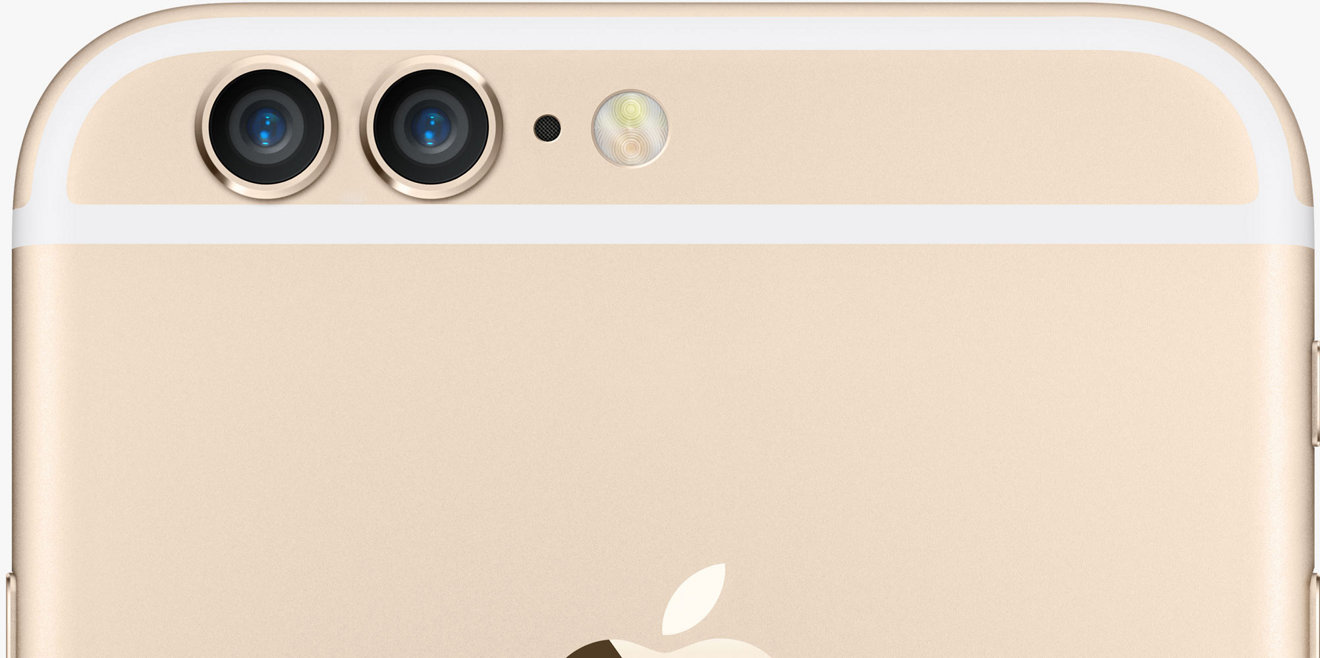For its iPhone 6 and 6 Plus follow-up expected to debut in 2015, Apple may introduce a handset with dual lenses in what one well-connected Apple pundit calls the "biggest camera jump ever."
On the most recent episode of The Talk Show podcast, Daring Fireball's John Gruber revealed that "a birdie of a birdie" told him Apple is working on a two-lens system for incorporation in the next-generation iPhone.
"The specific thing I heard is that next year's camera might be the biggest camera jump ever," Gruber said. "I don't even know what sense this makes, but I've heard that it's some kind of weird two-lens system where the back camera uses two lenses and it somehow takes it up into DSLR quality imagery."
The notion of using multi-lens imaging systems to make up for a smartphone's small form factor is a relatively recent development. In March, HTC unveiled the One M8 with a so-called "Duo camera" setup, which uses a secondary imaging sensor for depth data.
An interesting startup called Corephotonics, which was profiled by Engadget earlier this year, proposes a different approach. Corephotonics developed a dual-lens module with two distinct focal lengths, effectively negating resolution drops associated with digital zooming. One camera is used for wide shots, while the other is used for close-ups. As an added bonus, the system provides spatial data for 3D imagery due to its lens offset.
While speculation, Apple could employ a similar system, or even stitch together image data from both camera modules, to achieve DSLR-quality high-resolution photos. The company has no shortage of patents covering smartphone camera technology, including Lytro-like refocusing, interchangeable modules and interchangeable external lenses.
Perhaps most similar to today's rumor is an invention for a multi-sensor system that gathers luminance and chrominance values separately, processes the data and outputs photos at exceptionally high resolutions with equally high color accuracy.
 Mikey Campbell
Mikey Campbell








 Marko Zivkovic
Marko Zivkovic
 Christine McKee
Christine McKee
 Andrew Orr
Andrew Orr
 Andrew O'Hara
Andrew O'Hara
 William Gallagher
William Gallagher

 Mike Wuerthele
Mike Wuerthele
 Bon Adamson
Bon Adamson



-m.jpg)



74 Comments
Take my money. Phones are the future of cameras for most people most of the time. DSL-like will seal the deal. Can't wait.
i am enjoying more and more the capable camera system (hardware and software) that are in phones, especially the iPhone. my dslr is certainly better, but i am not above taking pics with the iPhone.
i hope that a two camera system, if it is indeed real, is not another $100 extra or just on the iPhone 6 plus s.
Well, didn't he say he wanted to revolutionize photography?
That image looks wretched.
Boo Yaa. The rumors start.